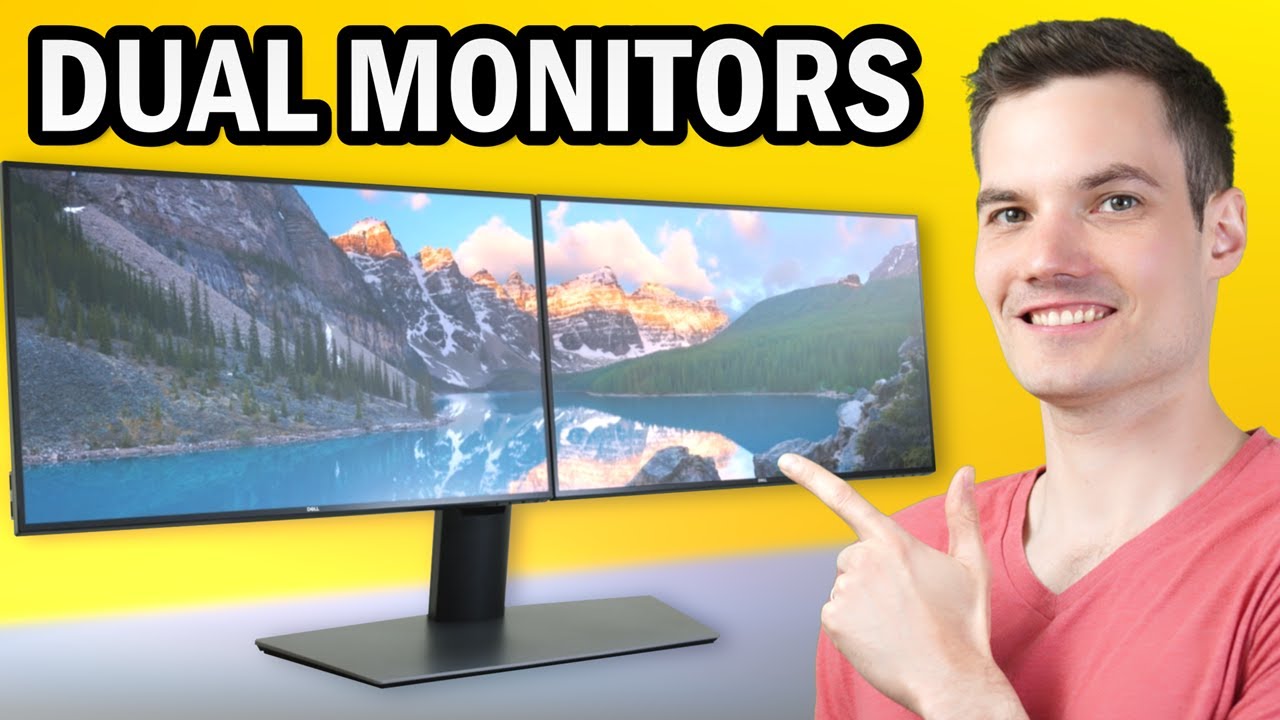5 Ways to View Excel Sheets on Dual Monitors

Understanding Dual Monitor Setup for Excel

In today's fast-paced work environment, efficiency is key. For those who juggle multiple Excel spreadsheets or large datasets, the ability to view and work on two screens simultaneously can be a game changer. Setting up dual monitors for Excel not only helps in enhancing productivity but also provides a clearer, more organized workspace for data analysis, financial modeling, or just about any task requiring extensive spreadsheet manipulation. This guide will walk you through various methods to effectively utilize dual monitors with Excel, ensuring your workflow is seamless and productive.
1. Native Windows Split-Screen Mode

The simplest way to view Excel on dual monitors involves using the native Windows split-screen functionality:
- Open two separate Excel files or create a new workbook for each monitor.
- Drag the window of one Excel file to one monitor and another to the second monitor.
- Right-click on the Windows taskbar and select 'Show windows side by side' or arrange windows manually.
💡 Note: The Windows split-screen mode only works for displaying windows on one monitor, but dragging windows to different monitors is straightforward.
2. Using Microsoft Power BI or Excel's Built-in Features

If your work involves data analysis, Microsoft Power BI can act as an extension of Excel, allowing for a dashboard view on one screen and Excel on the other:
- Import your Excel data into Power BI for visualization.
- Have one monitor display the detailed Excel data, while Power BI provides insights on the second screen.
Excel also has features like 'Quick Analysis' and 'Power Pivot' for more advanced data analysis, which can be showcased on one screen while editing occurs on the other.
3. Third-Party Software Solutions

Several third-party applications can enhance the dual monitor experience with Excel:
- Duet Display: Allows your iPad or secondary device to act as an additional monitor. Perfect for those who prefer a touch interface.
- DisplayFusion: Offers advanced window management, including taskbar customizations for multi-monitor setups.
- Spacemonger: Monitors and manages your available screen space, ensuring optimal window arrangement.
4. VBA Macros for Enhanced Control

For advanced users, Visual Basic for Applications (VBA) can automate Excel tasks to fit a dual monitor setup:
Sub ArrangeOnDualMonitors()
Dim wb1 As Workbook, wb2 As Workbook
Set wb1 = Application.Workbooks.Open("C:\Path\To\Workbook1.xlsx")
Set wb2 = Application.Workbooks.Open("C:\Path\To\Workbook2.xlsx")
' Position the workbooks on the appropriate monitors
wb1.Windows(1).Left = 0 ' Left monitor
wb1.Windows(1).Width = Application.UsableWidth / 2
wb2.Windows(1).Left = Application.UsableWidth / 2 ' Right monitor
wb2.Windows(1).Width = Application.UsableWidth / 2
End Sub
This VBA script will automatically position the workbooks on separate monitors, leveraging Excel's ability to work on multiple sheets at the same time.
5. Using External Display Management Software

Software like Actual Multiple Monitors or MultiMonitorTool allows you to manage how Excel behaves on dual setups:
- Independent Taskbars for each monitor.
- Custom resolution settings for each monitor, allowing for tailored data viewing.
- Shortcuts to move windows across screens with ease.
💡 Note: Ensure your monitors are calibrated for optimal color and resolution, especially if working with data visualizations.
To ensure a smooth experience with dual monitors, here are some considerations:
- Monitor Placement: Place your primary monitor where it's most comfortable for typing and analysis, with the secondary screen positioned either to the left or right.
- Cable Management: Ensure your workspace remains tidy, as dual monitor setups can create more clutter.
- Compatibility: Verify that both monitors can run at similar resolutions or are at least optimized for your graphics card's capabilities.
By following these methods, you can streamline your work with Excel on dual monitors, making multitasking not just efficient but enjoyable. The ability to have a live view of data or charts on one screen while you work on spreadsheets on another can greatly reduce the cognitive load and increase accuracy in your data analysis tasks.
Can I use dual monitors with Excel for different Excel files only?

+
Yes, you can have different Excel files open on each monitor. Drag the window to the desired monitor, and if necessary, use the ‘Arrange Windows’ feature to align them properly.
What if I have a mix of monitors with different resolutions?

+
Modern operating systems are quite adept at handling multi-monitor setups with different resolutions. You might experience some minor scaling issues, but programs like DisplayFusion can help manage these differences.
Is it possible to use VBA to manage the dual monitor setup?

+
Yes, VBA can automate window placement on different monitors, although it doesn’t directly interact with monitor setup. You can write scripts to control window positioning and size.
Are there any limitations to using Excel on dual monitors?

+
Limitations might include hardware capabilities, like graphics card support for multiple high-resolution screens, and software limitations like Excel not being optimized for a true dual monitor workflow beyond window management.
Can third-party software improve my Excel dual monitor experience?

+
Definitely! Software like Actual Multiple Monitors or MultiMonitorTool can enhance the functionality of Excel on dual monitors, providing independent taskbars, window management, and more control over screen space.